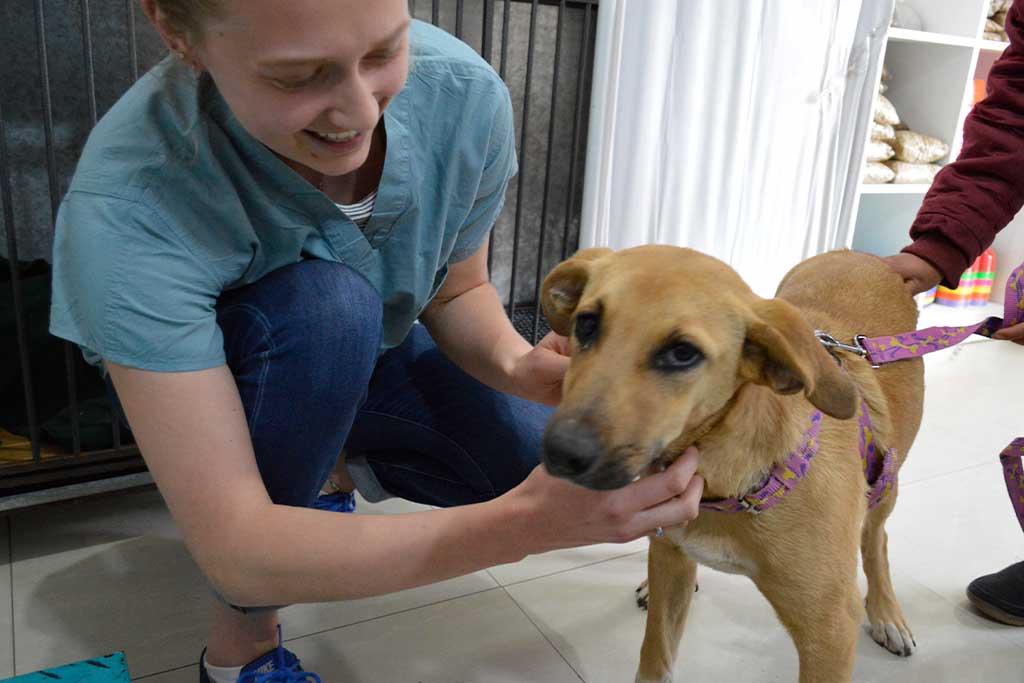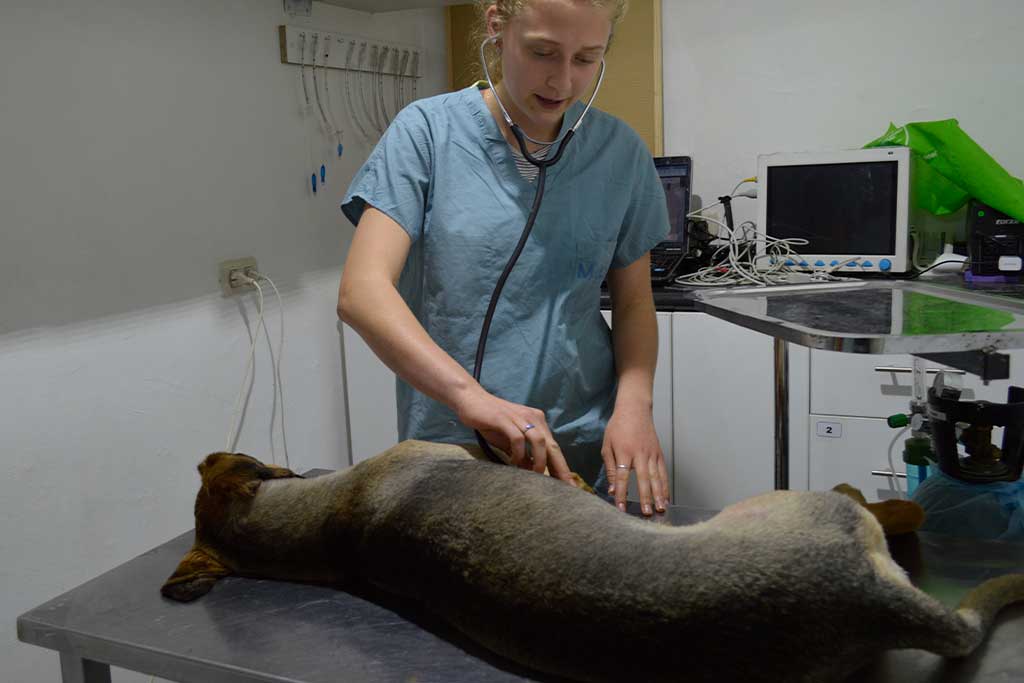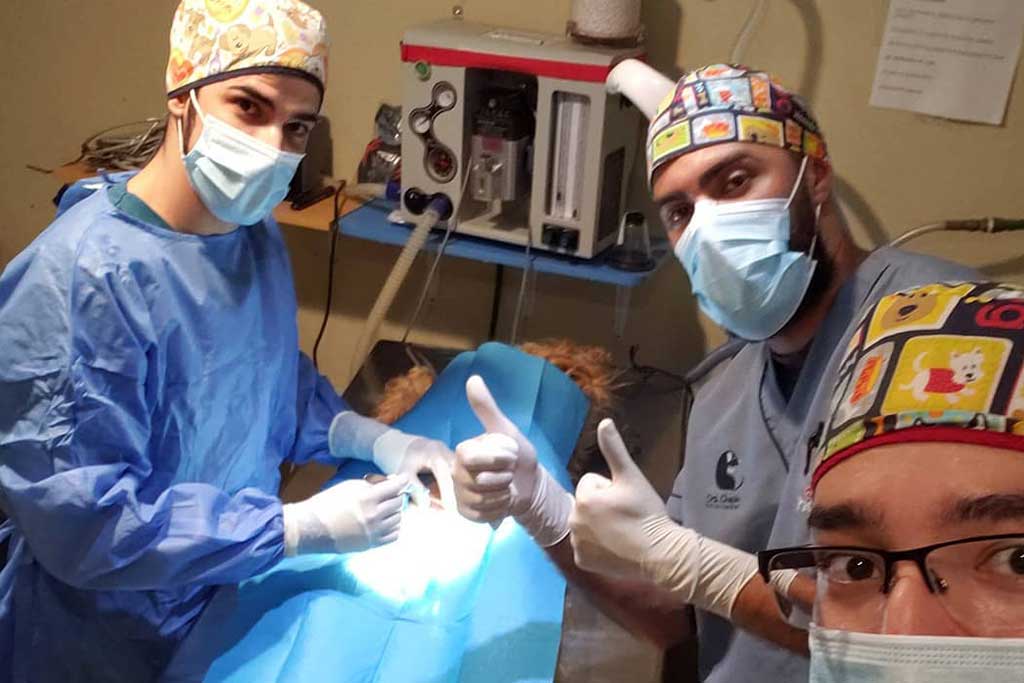Animal care is very regulated in the United States. For example, registered pet owners are required to vaccinate their cats and dogs against rabies when they are very young. If animals are mistreated, or if they have a history of unaggravated attacks, there are consequences for their owners. Before interning abroad, the cultural expectations that surround veterinary care in the States were something I took for granted.
Even though I was studying to become a veterinarian, I hadn’t considered the influence that culture has on medical treatment—for humans and animals alike. At least in part, I owe this to the fact that I had not been given many opportunities to apply my knowledge to real-life situations. My brain was a database of various anatomical structures, but I didn’t have much hands-on experience. So, I started looking for summer internships programs in the veterinary sciences.
That’s how I found Maximo Nivel online. I read that they offered various veterinary medicine programs in Latin America, and before I had time to doubt myself, I was flying to Costa Rica for a two-month internship. My placement was at a veterinary clinic in the capital city of San José, and I got to work alongside an experienced practitioner. As I expected, I learned a lot more in two months of interning that I had in an entire year of hitting the books.

Interacting with real animals and their owners made learning much more meaningful than the rote memorization to which I had become accustomed. But in addition to all of the medical knowledge I gained, I was also exposed to an aspect of animal care that society too often overlooks: cultural influence. Animal healthcare providers in developing countries have to face additional challenges that are not considered in most veterinary medicine curricula.
The doctor that I worked under was a veteran—not only in her field, but also in serving her particular community. She explained that a lack of education and resources has created a culture of not necessarily animal cruelty, but negligent pet ownership. The struggles she had faced for decades, as she implored her community to take better care of their pets, challenged my perception of the veterinary profession. In addition to the technical skills, I learned during my internship, I walked away with a more international outlook on veterinary medicine.
Caring for an animal responsibly both gives it the best life possible and prevents it from becoming a danger to its community. Pets that are kept in good health and treated lovingly don’t tend to be aggressive or carry infectious diseases. This is why preventative medicine is so important; it is, however, rare in Latin American culture. Due to this disparity, the clinic I worked at made an effort to advertise the benefits of annual check-ups when pet owners could afford them.

Moreover, community education played an instrumental role in my internship. The clinic I interned at, consistently takes advantage of the connections it has made with local pet owners as an opportunity to influence community conscience. On many occasions, I put my Spanish to the test when explaining the importance of animal nutrition, training, and overall care. This made me feel like I was benefitting the livelihood of local animals while furthering my language skills and resume.
My daily Spanish classes were extremely beneficial in helping me to communicate with pet owners. I already spoke intermediate Spanish when I came to Costa Rica, but the one-on-one instruction I received allowed me to focus primarily on medical terminology. I learned a lot of vocabulary that I will actually be able to use in my future career. Transforming my studies into hands-on learning only confirmed my desire to continue in the veterinary field, and the experience I obtained was not limited to language or the ethics of animal welfare.
The clinic I worked at was an extensive facility. It dealt with everything from grooming to surgery, and it even had a controlled unit for animals with infectious diseases. The staff was large and possessed a diverse range of specializations, assuring that all animals received the best care possible. Everyone I met was working very hard to give all of the animals the personalized attention they needed, as well as normalizing routine practices, such as vaccinations and deworming treatments. The facility was also very modern, equipped with all of the necessary tools to handle medical emergencies.

They were able to run blood tests and various body scans, perform safe and sanitary operations, and put pets under professional anesthesia. Seeing all these procedures was an excellent learning experience for me. The duties my supervisor gave me were well-rounded, but also within my capabilities. I assisted with everyday care such as feeding, grooming, and administering medications, in addition to monitoring animals who had recently come out of surgery. I was able to observe all stages of treatment, including check-ups, diagnoses, and medical procedures.
The vet who trained me was always very compassionate with concerned pet owners and careful to consider animals’ medical histories when making decisions concerning their treatment. I learned just as much from her modeling as I did from my own responsibilities. Assisting in a real clinic setting has made my area of study come to life. I learned so much about the intersection of medicine and culture, medical procedures themselves, and the type of veterinarian I hope to one day become.
